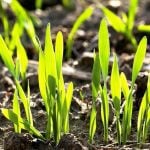The second half of May has been one of the rainiest periods seen in Manitoba in a number of years. On May 24 and 25, upwards to 70 millimetres of precipitation were reported in most areas, causing seeding to become delayed in multiple locations.
Soybeans

Pulse weekly: Farmers watching fields, chasing deadlines

Fund short position steady in canola
The managed money net short position in canola futures held steady during the week ended May 21, according to the latest Commitments of Traders report from the United States Commodity Futures Trading Commission (CFTC).

U.S. grains: Wheat rises 7 per cent this week on Russia crop worries
Chicago Board of Trade wheat futures closed nearly flat on Friday but rose seven per cent for the week as concerns grew over crop losses in Russia and other exporting countries.

U.S. grains: Wheat ends up on Black Sea crop worries, but rally seen losing steam
Chicago Board of Trade wheat futures extended gains on Thursday after reaching a 10-month peak a day earlier, as lingering dryness and worries over the Black Sea crop continued to underpin the market.

ICE Weekly: Canola reaches 2024 highs
Canola futures at the Intercontinental Exchange (ICE) rose to their highest levels of 2024 during the week ended May 22.

CBOT Weekly: Spring wheat poised for good conditions
Planting of the spring wheat in the United States continues to be off to an excellent start, according to Tom Lilja of Progressive Ag in Fargo. Meanwhile, the heavy rains that fell as of May 21 are very likely to lead to less corn being seeded with U.S. farmers switching to soybeans.

U.S. grains: Wheat sets 10-month high on deteriorating Russian harvest prospects
Chicago Board of Trade wheat futures climbed to a 10-month peak on Wednesday as worries grew about deteriorating harvest prospects in top exporter Russia, before the market turned lower.

Manitoba seeding progress nears halfway mark
Spring seeding in Manitoba neared the halfway mark during the week ended May 21, with 47 per cent of intended acres in the ground, according to the latest provincial crop report. That compares with 30 per cent the previous week and the five-year average of 52 per cent done.

U.S. grains: CBOT wheat hits July high on declining Russian crop estimates
Chicago Board of Trade wheat futures Wv1 reached their highest level since July on Tuesday as frost damage in top-exporter Russia and lower U.S. crop ratings supported prices, traders said.

Alberta Crop Report: Much-needed moisture replenishes province
The rains that fell onto south, central and northeastern Alberta during the week ended May 14 were a mixed blessing for growers according to the provincial government’s crop report released on May 17.



